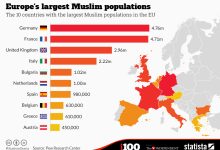The population of the United States is a complex and evolving subject, reflecting a dynamic demographic landscape influenced by a range of factors including migration, birth rates, and policy changes. As of the early 2020s, the population of the United States stands at over 330 million people, making it the third most populous country in the world after China and India.
Historical Context and Growth Trends
The population of the United States has experienced significant growth since the country’s founding. In 1790, the first census recorded a population of approximately 3.9 million. Over the centuries, the population has expanded rapidly due to a combination of high birth rates, immigration, and territorial expansion. By the early 20th century, the population had surpassed 100 million, and by the 1970s, it had reached 200 million. The 21st century has seen continued growth, although the rate of increase has slowed compared to previous decades.
Recent Demographic Changes
In recent years, several demographic trends have become prominent. The U.S. Census Bureau’s estimates indicate that the population growth rate has slowed, reflecting a combination of lower birth rates and changes in immigration patterns. The U.S. fertility rate, which had been relatively high in the post-World War II era, has declined, and this trend has been influenced by various socio-economic factors, including increased access to education and employment opportunities for women, as well as changing societal attitudes toward family size.
Immigration continues to play a significant role in shaping the population dynamics of the United States. The country remains a major destination for immigrants from around the world, contributing to its diverse demographic makeup. Immigration patterns have shifted over time, with notable changes in the countries of origin of immigrants. While European immigrants were predominant in the 19th and early 20th centuries, more recent waves have come from Latin America, Asia, and Africa.
Regional Population Distribution
The population distribution across the United States is uneven, with certain states and regions experiencing higher growth rates than others. Historically, the most populous states include California, Texas, and Florida, each with substantial urban centers that attract both domestic and international migrants. The state of California, for instance, is the most populous state, with its major cities like Los Angeles and San Francisco serving as significant economic and cultural hubs.
Conversely, some regions, particularly in the Midwest and Northeast, have experienced slower growth or even population declines. States like New York and Ohio have faced challenges related to economic shifts, deindustrialization, and demographic changes. This regional variation in population growth has implications for political representation, resource allocation, and regional planning.
Population Diversity
The diversity of the U.S. population is one of its most defining features. The United States is a multicultural nation with a rich tapestry of racial, ethnic, and cultural backgrounds. According to census data, the majority of the population is of European descent, but there are substantial and growing populations of Hispanic or Latino, African American, Asian American, and Native American individuals.
The Hispanic or Latino population is one of the fastest-growing demographic groups in the United States. This growth is driven by both immigration and higher birth rates compared to other groups. Asian Americans also represent a significant and growing segment of the population, with diverse national origins contributing to a wide range of cultural practices and languages.
Impact of Demographic Changes
The changing demographics of the United States have broad implications for various aspects of society. In the economic realm, shifts in population size and composition influence labor markets, economic growth, and social services. For example, an aging population, coupled with lower birth rates, poses challenges for retirement systems and healthcare services.
In the political sphere, demographic changes affect electoral politics and representation. The growing diversity of the population has led to increased political engagement and representation among minority groups. This shift is reflected in the changing composition of Congress and other political offices.
Educational and cultural institutions are also impacted by demographic trends. Schools and universities must adapt to a more diverse student body, and cultural institutions work to address the needs and interests of a varied population.
Future Projections
Looking ahead, demographic projections suggest that the population of the United States will continue to grow, though at a potentially slower pace compared to past decades. Factors such as immigration policy, economic conditions, and social trends will play critical roles in shaping future population dynamics.
The U.S. Census Bureau and other demographic research organizations regularly produce projections based on current trends and data. These projections are important for planning purposes, as they help policymakers, businesses, and community leaders anticipate future needs and challenges.
Conclusion
The population of the United States is a dynamic and multifaceted subject, reflecting a broad range of historical, social, and economic influences. As the country continues to evolve, understanding population trends and their implications is crucial for addressing the opportunities and challenges that lie ahead. The interplay of growth, diversity, and regional variations will continue to shape the nation’s demographic landscape in the years to come.




